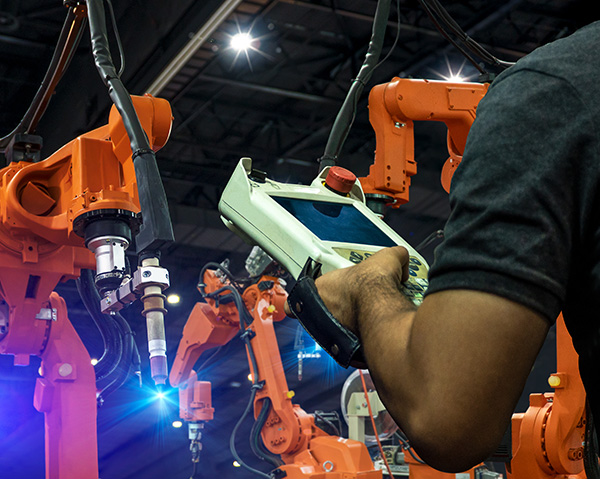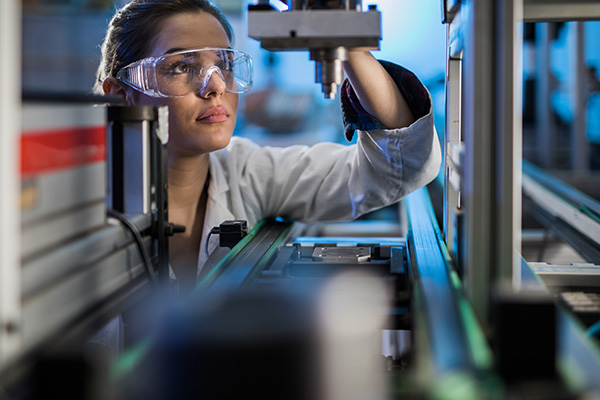Productivity, efficiency and quality are the three watchwords for the new dawn of the industrial internet of things (IIoT). Under the surface of the well-wired floor of the factory of the future are connected devices, configured to make IIoT a reality.
Hank Graham, product manager for single board computers (SBC) and electronics at RS, sees the factory of the future as an industrial site digging its heels firmly into automation.
Automation offers countless benefits, including the scalability, security and flexibility that today’s production environments require. Graham believes there’s opportunity to help production managers meet an ever-growing set of objectives with a production line featuring a well-designed automation network and reliable components. These include mandates like increasing efficiency, ensuring availability, preventing downtime and enabling interoperability.
Interoperability allows machines to securely communicate with each other, while harnessing certain attributes of artificial intelligence. This includes gathering data from manufacturing processes and using “deep learning” to fine-tune production like never before. Graham adds that interoperability also means having the capability to communicate and integrate with robotic systems and automated guided vehicles. Automated and interoperable, IIoT is geared to boost productivity, efficiency and quality.
Productivity
The factory of the future is being shaped today. It is being built with connected devices and data within the service environments (which can sometimes be harsh and sensitive) where they operate. “It’s all about getting data out of a network and into a database for further processing for optimizing in the IIoT network,” says Ruud van den Brink, global product manager at TE Connectivity, a leader in industrial connectors and sensing devices. “Automation is finding its way into industry. Networks are getting more complex and the numbers of devices and interconnected networks are growing.”
Voluminous data may be processed to provide information that drives decisions on the factory floor and this dynamic is accelerated with complex networks and leads to greater productivity. Maintenance can more efficiently be focused on needed areas. Materials, feedstock, and components can be more efficiently ordered and inventoried, and other systems such as robotics may work in sync with production workers and operators. The entire process has an added productivity that improves year over year, with better connectivity and reliable devices to help networks grow and optimize.
In addition to having connected devices for productivity, connections can be modularized and set at the factory level to expedite the time required to install them. Improving devices with modular connectivity (rather than hard-wiring each component manually) allows for swift installation and a quicker path to reap the benefits of boosted productivity.

This boost in productivity, made possible by the well-connected factory floor, translates to reduced downtime, better use of redundant equipment and production cells and, ultimately, more productivity.
Efficiency
More productivity yields more efficiency. Efficiency, as a basic concept, is output relative to input. When output is increased through connectivity and complex networks made possible by IIoT, inputs may be measured, monitored and better controlled. With improved measurement, monitoring and control comes optimization of the primary components of manufacturing — materials and labor. Optimizing all inputs into the manufacturing cell enables manufacturing leadership to be most resourceful: using just what is needed to meet production goals.
Efficiency also means conserving another critical resource: energy. For example, when data gathered from an IIoT-enabled factory is processed, it can tell an operator how many injection molders should be running, which pumps should be on or off at which times, and where other energy consumption can be curtailed. A well-connected production line, enhanced by useful data, can greatly improve energy efficiency, which is another critical step on the quest for lower operational costs.
IIoT positively impacts the efficiency of the factory of the future by helping operators make smart decisions, automating equipment and systems and controlling the inputs required to meet production goals and objectives efficiently.

The factory of the future, however, must accomplish more than just productivity and efficiency. It needs to represent quality in what it produces. This is even more true for companies competing in an aggressive global market that demands superior quality. Implementing IIoT can help in this effort.
The integrity of the underlying system components and equipment are finely shaped, tuned and programmed to meet product specifications thanks to connected devices and complex networks in IIoT landscapes.
Data drives quality control by making maintenance timely and fitting. Improved maintenance ensures equipment performs as expected and required, allowing products to meet specifications with superior quality. But data also affords visibility and control – which enables better monitoring of product quality.
With a robust quality control program, improved and enhanced with connected devices and remote platforms, the factory of the future may achieve unprecedented quality goals.
Bringing It All Together
The factory of the future interlinks productivity with efficiency and quality. The game-changer, however, is factory automation and high-speed connectivity, made possible by components with new capabilities. As RS’s Hank Graham says, “When it all comes together, the factory of the future becomes a customized manufacturing facility with real-time production networks that get results.”
Additional Information:
- Video: Customer testimonial for using Harting industrial connectivity vs hardwiring to optimize uptime and maintenance
- RS PLC & HMI Product Hub
- RS Sensors Product Hub
- RS Connectors Product Hub
- RS Expert Advice Industrial Communications Topics Page
- RS Expert Advice Sensing Topics Page
- RS Harting industrial connectors product line Page
- TE/RS high-speed industrial connectivity Page
- RS/Amphenol Industrial Connectivity Products Page
- RS Industrial Controls/Cobots Page







